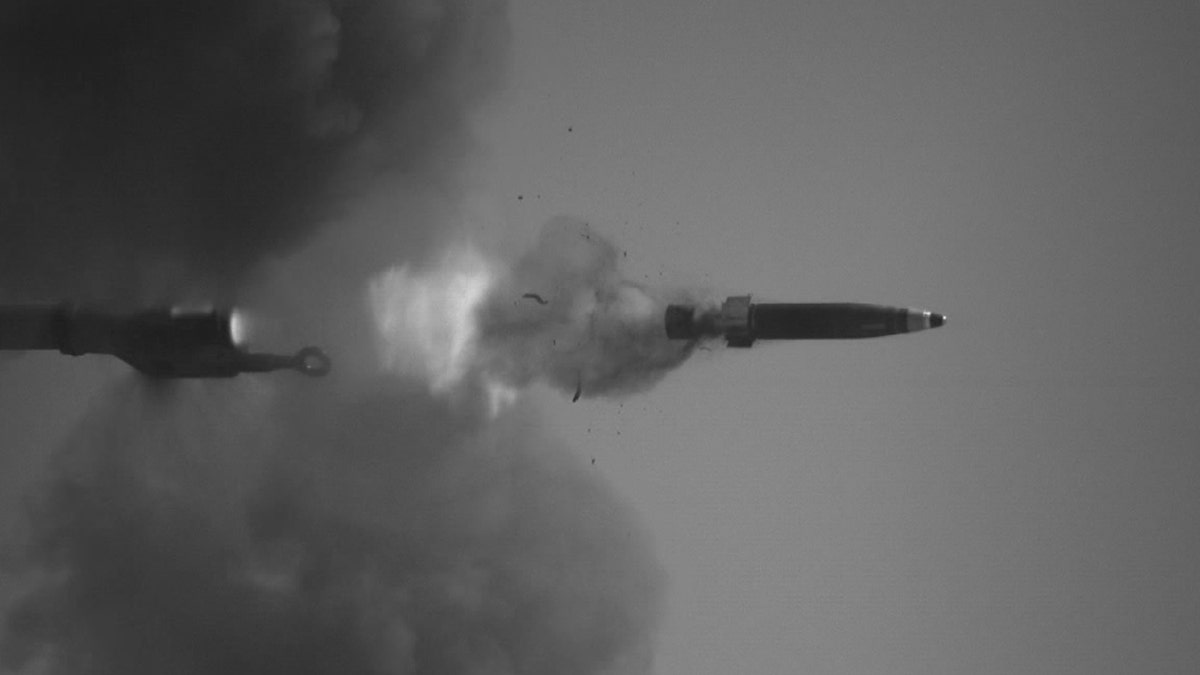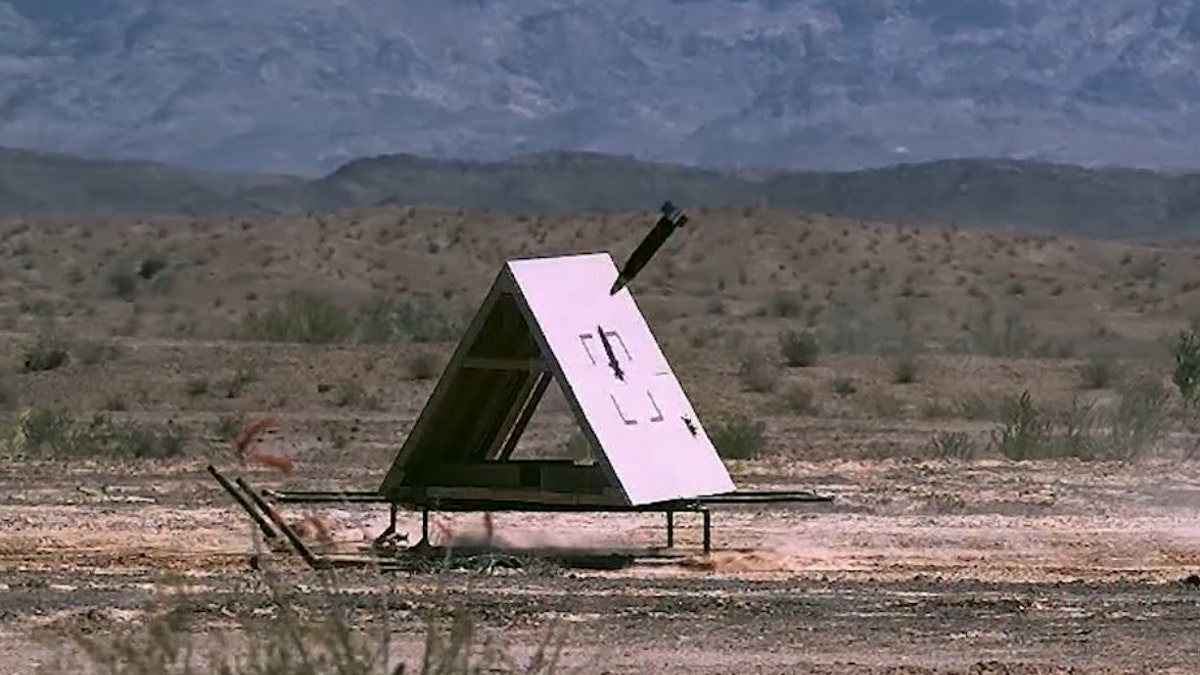
Excalibur S round photographed during a test. (Raytheon)
Enemies hiding under a bridge, bunkered down on a specific floor in a large building, seeking cover on the backside of a mountain ridge or moving to attack in an armored vehicle convoy --- are all now more vulnerable to U.S. strikes due to an emerging laser-guided artillery round that can destroy enemy targets on the move in combat.
“We have many different experiments that are going on for long-range precision fires,” Army Vice Chief of Staff Gen. Joseph Martin told Warrior in an interview last fall.
The laser-guided Raytheon-developed weapon is an upgrade or adaptation to the well-known, GPS-guided Excalibur 155mm round first fired in Iraq more than 10 years ago. Using GPS and Inertial measurement precision guidance technology, Excalibur can pinpoint and eliminate targets from 30km (18.6 miles) -- within just one-meter of accuracy. The combat debut of Excalibur in Iraq ushered in what could be called a land-war transformation, marking the advent of a new kind of precision land attack.
PENTAGON DEPLOYS NEW SUB-LAUNCHED, LOW-YIELD NUCLEAR MISSILE
Prior to precision-guided land artillery, 155m rounds were typically imprecise attack weapons used as area fire to blanket certain enemy areas, enabling forces to maneuver while under enemy fire. GPS-guided weapons from the air, such as Joint Direct Attack Munitions, had been in existence for well over a decade before Excalibur; Excalibur brought an unprecedented measure of precision attack to land warfare.

Raytheon Excalibur S test. (Raytheon)
While unprecedented at the time, the existing or legacy precision-guided Excalibur round can only pinpoint fixed targets; now, Excalibur maker Raytheon has successfully demonstrated the ability for precision-guided Excalibur S rounds to track and destroy “moving” targets - using laser attack technology. The “S” round is engineered with what is called an enhanced shaped trajectory which, developers explain, enables it to make otherwise impossible adjustments in flight.
“This does give the round maneuverability to target a floor within a building, go under a bridge or hit the backside of a mountain,” Trevor Dunwell, Raytheon’s Excalibur portfolio director, told Warrior in an interview. “When you get to terminal engagement, the round can relocate depending upon the target. This would be able to engage a moving convoy.”
NAVY ARMS SEA DRONES FOR OCEAN ATTACK

Raytheon Excalibur S round approaches target during a test. (Raytheon)
The technology was recently used in a successful live-fire test at Yuma Proving Grounds, Ariz., wherein the Excalibur S round showed it could destroy targets on the move. Raytheon’s Excalibur S innovations are, according to developers, intended to align with the Pentagon’s modernization strategy and anticipate emerging requirements now being pursued for future warfare.
The test, which fired the Excalibur S from an M777 Howitzer mobile artillery cannon, was observed by the Navy, which is now analyzing data from the test firing. The initial Excalibur rounds, including an upgraded 1B round, were developed for the Army, yet the success of the weapon has continued to inspire Raytheon and several military services to explore additional uses for Excalibur. In his discussion with Warrior, Martin cited the importance of advanced artillery weapons when it comes to precision fires and the Pentagon's increasingly vital cross-domain warfare strategy.
“We’re going to increase the capability of our cannons, we’re going to increase the capabilities of our artillery and rocket forces. We’re going to change the dynamics necessary to compete in the future on the multi-domain battlefield,” Martin said.
CLICK HERE TO GET THE FOX NEWS APP
Dunwell explained that there have been some modifications to the weapon to accommodate laser designation, including seeker enhancements and various and laser-tracking sensors; using a laser rangefinder or laser “spot,” targets can be “painted” by air assets such as drones or surveillance airplanes, or ground units.
The laser spots give the round a specific target or point of attack to strike, while bringing an ability to keep a spot on a target as it moves. This is precisely what the Navy test was able to demonstrate.




















